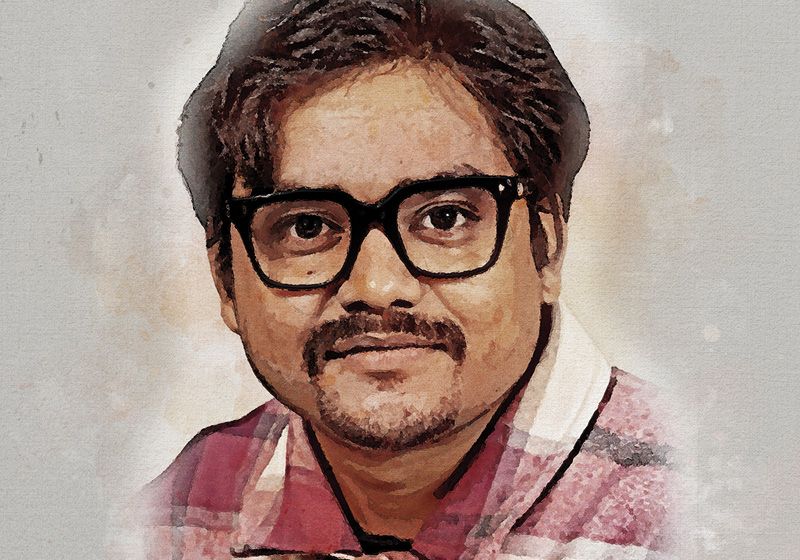Q | Write a brief introduction to yourself including the lab you work in and your research background.
I’m Souvik Ghosh, a post-doctoral research fellow in the Ocular Bioengineering Lab, led by Dr. Samuel Herberg at SUNY Upstate Medical University. I am currently studying how small forces influence the behavior of cells in the eye. With a background in bioengineering and cellular biology, I’m intrigued by how our tissues sense and respond to their physical environments and how these insights could lead to new ways to prevent or treat vision loss.
Q | How did you first get interested in science and/or your field of research?
In undergrad an idea stopped me in my tracks: ontogeny repeats phylogeny, the concept that development of an individual reflects evolutionary journey of life from one cell to many. I remember visualizing a single fertilized egg as a tiny time machine, replaying billions of years of innovation as it divides, differentiates, and develops tissues. That visual of order emerging from simplicity, cells coordinating and communicating, forming shapes, and producing function without a blueprint one can hold in their hand, felt almost magical. I became fascinated by the question, what underlying rules let that emergence happen?
That interest pulled me into bioengineering, an area where one can hypothesize, build a physical model, and then check how living systems respond. During my PhD, I worked in neural tissue engineering, designing environments to help nerve cells grow. There I learned that biology isn’t just about genes and chemistry, it’s also about forces such as stretch, stiffness, and tension, which profoundly change how cells behave. That practical encounter with biomechanics hooked me. In my postdoc I transitioned into mechanobiology, the study of how physical cues influence cells, which ultimately steered me toward the eye, where tiny mechanical imbalances can have outsized effects on vision. The work feels like solving a puzzle with real-world impact, and that keeps me excited every day.
Q | Tell us about your favorite research project you’re working on.
Currently I am working on a project that deals with the question of why some parts of the drainage system of eye work efficiently while others tend to fail, especially in glaucoma. I study a tissue called the trabecular meshwork that functions like a pressure valve. This valve allows the fluid to exit the eye to keep pressure at normal physiological state. But all regions of this tissue are not uniform. Some areas (high-flow) are soft and flexible, allowing fluid to move freely, while others (low-flow) are stiffer and more resistant. In glaucoma, those stiffer regions dominate, clogging the system and raising eye pressure, which can damage vision.
What makes me interested is that the cells themselves seem to “remember” which region they came from. Even when I grow them outside the eye, in carefully designed gels that mimic living tissue environment, high-flow and low-flow cells behave very differently. The low-flow cells pull harder on their surroundings, generate more tension, and even reorganize their nuclei in ways that make their DNA more open to activity. High-flow cells, on the other hand, are less mechanically active, with smaller, more compact nuclei.
It’s a bit like watching two characters in a movie who share the same setting but respond completely differently to it. Uncovering how their “personalities” are shaped by mechanical forces not only satisfies my scientific curiosity but also holds the promise of rewriting how we approach glaucoma treatment. The idea that small, invisible forces could be key to protecting sight makes every experiment feel like an important scene in that unfolding story.
Q | What do you find most exciting about your research project?
The most exciting part of my scientific journey was the moment when I realized I truly love what I’m doing. It happened during my PhD, when I was trying to understand puzzling results that at the beginning didn’t seem to fit. As I looked at the data thoroughly, I began joining the dots, like a detective uncovering hidden clues in plain sight. Suddenly, the story made sense, and I felt that rush of excitement that comes when a mystery begins to untangle.
That moment made me realize that science, for me, is not just about running experiments or generating data. It’s about the thrill of discovery, the joy of chasing a question, pulling together scattered observations, and finally seeing the bigger picture emerge. Since then, I’ve embraced every project as a chance to solve another mystery.
Q | If you could be a laboratory instrument, which one would you be and why?
As my current work involves a lot of imaging, I’d be a confocal microscope. I love that a confocal microscope can peel back layers, converting an opaque tangle into a clear, 3D story. It doesn’t just capture images; it scans, focuses, and reveals dynamics one couldn’t see otherwise.
So, as an instrument, I’d be the calm observer in the middle of the lab, exposing light where questions are darkest and handing beautifully simple images to busy, complicated problems. I’d be adaptable, switching magnification, depth, or speed depending on what the experiment needs, and turning raw complexity into something that all can appreciate. Above all, I’d get to witness discovery up close, that moment when a puzzling pattern suddenly becomes meaningful.
Are you a researcher who would like to be featured in the “Postdoc Portraits” series? Send in your application here

